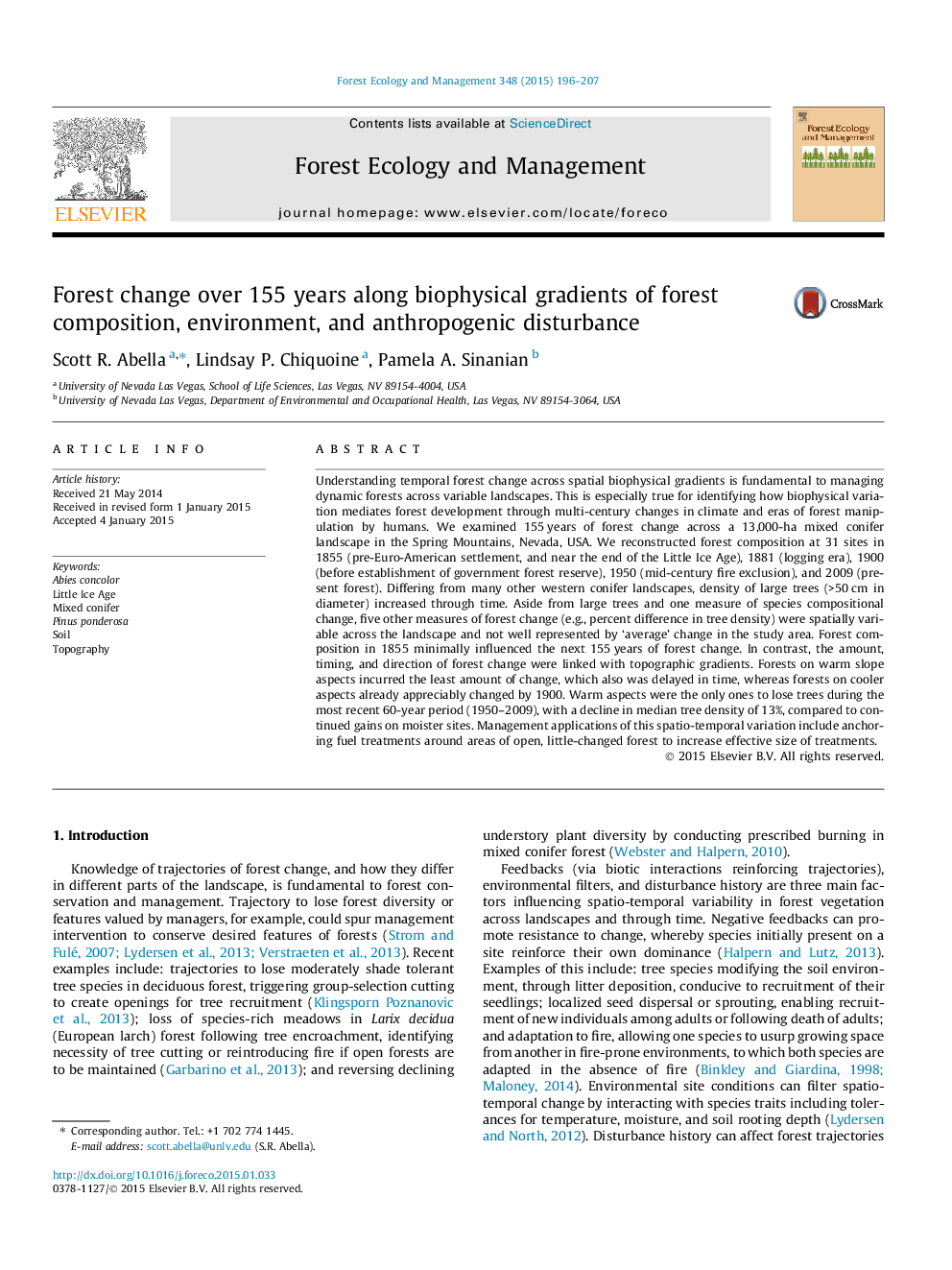| کد مقاله | کد نشریه | سال انتشار | مقاله انگلیسی | نسخه تمام متن |
|---|---|---|---|---|
| 6542818 | 159173 | 2015 | 12 صفحه PDF | دانلود رایگان |
عنوان انگلیسی مقاله ISI
Forest change over 155 years along biophysical gradients of forest composition, environment, and anthropogenic disturbance
ترجمه فارسی عنوان
تغییر جنگل بیش از 155 سال در طول شیب بیوفیزیکی ترکیب جنگل، محیط زیست و اختلالات انسان شناسی
دانلود مقاله + سفارش ترجمه
دانلود مقاله ISI انگلیسی
رایگان برای ایرانیان
کلمات کلیدی
موضوعات مرتبط
علوم زیستی و بیوفناوری
علوم کشاورزی و بیولوژیک
بوم شناسی، تکامل، رفتار و سامانه شناسی
چکیده انگلیسی
Understanding temporal forest change across spatial biophysical gradients is fundamental to managing dynamic forests across variable landscapes. This is especially true for identifying how biophysical variation mediates forest development through multi-century changes in climate and eras of forest manipulation by humans. We examined 155Â years of forest change across a 13,000-ha mixed conifer landscape in the Spring Mountains, Nevada, USA. We reconstructed forest composition at 31 sites in 1855 (pre-Euro-American settlement, and near the end of the Little Ice Age), 1881 (logging era), 1900 (before establishment of government forest reserve), 1950 (mid-century fire exclusion), and 2009 (present forest). Differing from many other western conifer landscapes, density of large trees (>50Â cm in diameter) increased through time. Aside from large trees and one measure of species compositional change, five other measures of forest change (e.g., percent difference in tree density) were spatially variable across the landscape and not well represented by 'average' change in the study area. Forest composition in 1855 minimally influenced the next 155Â years of forest change. In contrast, the amount, timing, and direction of forest change were linked with topographic gradients. Forests on warm slope aspects incurred the least amount of change, which also was delayed in time, whereas forests on cooler aspects already appreciably changed by 1900. Warm aspects were the only ones to lose trees during the most recent 60-year period (1950-2009), with a decline in median tree density of 13%, compared to continued gains on moister sites. Management applications of this spatio-temporal variation include anchoring fuel treatments around areas of open, little-changed forest to increase effective size of treatments.
ناشر
Database: Elsevier - ScienceDirect (ساینس دایرکت)
Journal: Forest Ecology and Management - Volume 348, 15 July 2015, Pages 196-207
Journal: Forest Ecology and Management - Volume 348, 15 July 2015, Pages 196-207
نویسندگان
Scott R. Abella, Lindsay P. Chiquoine, Pamela A. Sinanian,
